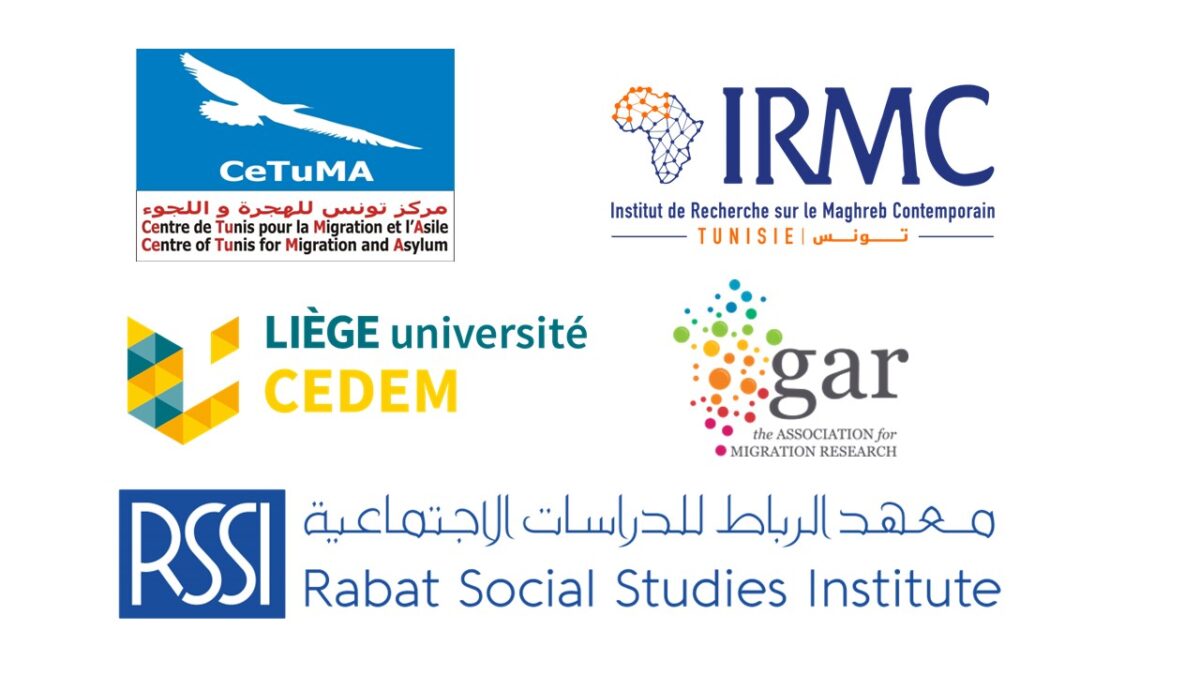Scientific Cooperation Agreement and the Four Ethnographic Antennae
SOLROUTES has signed five scientific cooperation agreements with local research centers in three crucial transit areas in Morocco, Tunisia and Turkey and a fourth one in Belgium with the aim of promoting scientific cooperation and achieving the objectives of the SOLROUTES project.
The Rabat Social Studies Institute (RSSI Rabat, Morocco), The Institute for Research on Contemporary Maghreb (IRMC Tunis, Tunisia), Tunis Centre for Migration and Asylum (CeTUMA, Tunisia), The Association for Migration Research (GAR Istanbul, Turkey), The Centre for Ethnic and Migration Studies (CEDEM Liège, Brussels) are the five local partner research institutions of the SolRoutes project. All of these are all well-established research centers on migration and border solidarity and have implemented several national and international research projects. We had previously collaborated on several initiatives, including educational and research activities, and especially in the preparatory phase of the ERC Advanced SOLROUTES project.
Through the scientific cooperation agreements with local research centres, the first four Ethnographic Antennae (EAs) have been established, where PhD SolRoutes researchers will live and conduct ethnographic fieldwork to generate and bring together reflexive knowledge about solidarity networks, migrants and other key actors.
The Ethnographic Antennae are connected to and supported by local academic advisors and the partner research centers, and they are designed as networks of trans-local research, media and cultural centres. Thanks to the project’s wide range of innovative research tools, they will gather knowledge from migrants in transit, solidarity networks and other key actors. At the same time, they will broadcast and disseminate knowledge of research on both sides along the route, acting as useful nodes of cultural production and debate. The depth of ethnographic research on the EU’s fringes, – Morocco, Tunisia and Turkey, will enable the decolonizing of the gaze on solidarity through observing spaces characterized by harsher border surveillance and smuggling networks, and different cultural entanglements. The fourth EA in Belgium will address the space of solidarity in the context of the re-emergence of internal borders and EU governance of migration and asylum.
Each EA has identified research activities related to the first Node[1] that will develop over four months beginning in October 2023 and ending in January 2024 with an in-person seminar at the level of each Antenna and an online seminar of all Antennae to facilitate a comparative reading of the first findings. These seminars, in collaboration with our local partners, and the SCERE and SAB members, will also serve to define research developments and readjustments in each Antenna (Node 2), to discuss Caravans’ Research Plans (which will be carried out in the first six months of 2024), to evaluate general feasibility conditions, and to scrutinize ethical issues related to fieldwork activities.
The choices of Nodes 1 for the four Antennae will focus mainly on urban spaces, conceived both as a city of departure (such as Izmir and the region of Sfax/Mahdia) and as a circulation hub or a place of settling for people on the move (Rabat and Brussels). The first GNWs’ (Generative Narrative Workshop) wave will mobilize music, theatre and video storytelling as a tool for collaborative ethnography. Special attention will be paid to gender issues and to family solidarity networks around the situation of deportees.
Notes
[1] The term Node is used to describe a social and temporal space of transit across the routes that exceeds the mere geographical dimension and in which different and contingent assemblages – of centralised platforms and digital networks, camps and encampments, gateways and passages – emerge and overlap. For instance, they can be cities, public spaces, islands, vessels, mountain passes, railway stations, hospitals, and churches. It is precisely these nodes, in which the forced dimension of corridors gives rise to lived-in routes, that the project sets out to discover and explore.




